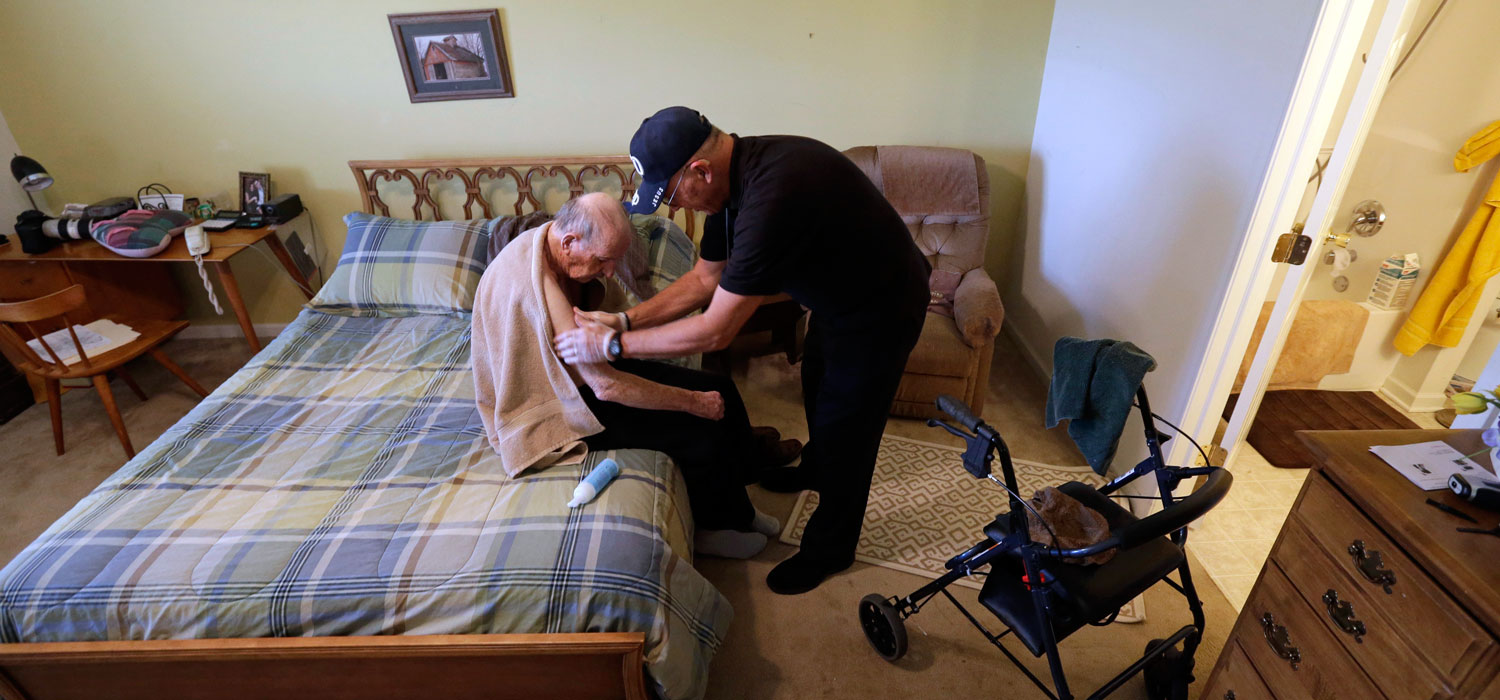
The Urban Institute is collaborating with the Stanford Center on Longevity on the challenges and opportunities for living well while living longer. Motivated by the Stanford Center on Longevity’s Sightlines Report, Urban scholars are exploring issues and policy initiatives across the age span, from millennials to baby boomers. This post is part of a series culminating in our June 14 event, Rethinking the Future: the Opportunities of Longevity.
As our population ages, we continue to struggle with how best to serve growing numbers of older Americans, many of whom will need hands-on help to live their daily lives. But at the same time, we need to think about the caregivers—and their ability to live long and well. Let’s talk about them.
Whether it’s an adult child caring for an elderly parent or an aide hired to provide needed support, caregiving poses risks that can undermine caregivers’ own health and financial security as they get older.
Policies to support caregivers have the potential to improve incomes and retirement savings for family caregivers of all ages and raise incomes and enhance retirement security for hired direct-care workers, now among the most disadvantaged (albeit the fastest-growing) segment of the workforce.
The financial risks of caregiving
In addition to the physical and emotional difficulties associated with caregiving, about one in four family caregivers experience financial challenges.
Family caregivers often foot the bill for things like home modifications, assistive technology, and additional (paid) assistance. And if they have to reduce their hours or drop out of the labor force entirely, they’ll also lose income and retirement savings. For a family caregiver, the resulting lifetime wage, Social Security, and private pension losses could total as much as $300,000.
Direct-care workers don’t earn enough to ensure financial security now, much less as they age. In 2011, direct-care workers’ median earnings came in at just under $17,000—well under the federal poverty level for a family of three. Almost half of direct-care workers’ families rely on public benefits like SNAP or Medicaid. And considering that more than half of these caregivers have, at most, a high school education, moving up the income ladder is especially tough.
Caring for caregivers with policies that improve incomes and benefits for caregivers and public financing for long-term care
Higher incomes and greater financial security lead to better health. If we don’t address the challenges facing today’s caregivers, they and their families might not have the resources they need to live long and healthy lives.
Current policies tend to take caregivers for granted, but a few strategies show promise:
-
Paid medical or family leave for working family caregivers: The Family Medical Leave Act allows some family caregivers to take time off while caring for family members, but that leave is unpaid. Most workers—especially low-income or part-time workers—can’t afford that. To date, nine states are addressing this gap by requiring employers to give workers paid time off to care for family members, including older adults. These measures could facilitate leave-taking for employed caregivers, without sacrificing income for both current and future purposes.
Evidence suggests that such policies promote more stable employment without adversely affecting profitability. -
Tax benefits and Social Security credits for family caregivers: At the federal level, proposals are reemerging to address family caregivers’ current and future financial challenges. Secretary Clinton has proposed a tax credit for caregivers that would offset up to $6,000 in caregiving expenses for parents and grandparents. She has also proposed that credits toward Social Security benefits be awarded for time spent out of the paid workforce in order to give care.
-
Better pay and benefits for direct-care workers: Not only do direct-care workers earn low wages, but until recently, they also lacked protection under the Fair Labor Standards Act, including overtime pay. Recent federal regulations have addressed the regulatory issues, and the movement to raise the minimum wage aims to increase earnings for direct-care and other workers.
Beyond income improvements, the Affordable Care Act has extended access to subsidized health insurance for direct-care workers. In a similar vein, policymakers have proposed efforts to facilitate retirement savings for workers without access to employer-based savings plans.
-
Enhanced public financing for long-term care: Although the need for long-term care is an unpredictable, catastrophic expense, neither private nor public insurance currently covers it. Medicaid, the nation’s long-term care safety net, finances care only after people have exhausted all their resources, limits care outside of nursing homes, and does little to assure adequate pay or benefits for direct-care workers. Without insurance, many families are unable to hire paid workers, and people with and without family caregivers are at risk of inadequate care.
Social insurance for long-term care could affect family caregiving as well as the demand for and payment of direct-care workers. A bipartisan group of experts recently recommended public protection for catastrophic long-term care expenses, and Senator Sanders has included protection for long-term care expenses in his single-payer proposal.
Though we need additional research to assess which policies are most effective, initiatives like these could boost caregivers’ current economic circumstances and improve their economic security for years to come—bettering the chances that they and their families will live long and live well.
More posts in this series:
Tune in and subscribe today.
The Urban Institute podcast, Evidence in Action, inspires changemakers to lead with evidence and act with equity. Cohosted by Urban President Sarah Rosen Wartell and Executive Vice President Kimberlyn Leary, every episode features in-depth discussions with experts and leaders on topics ranging from how to advance equity, to designing innovative solutions that achieve community impact, to what it means to practice evidence-based leadership.